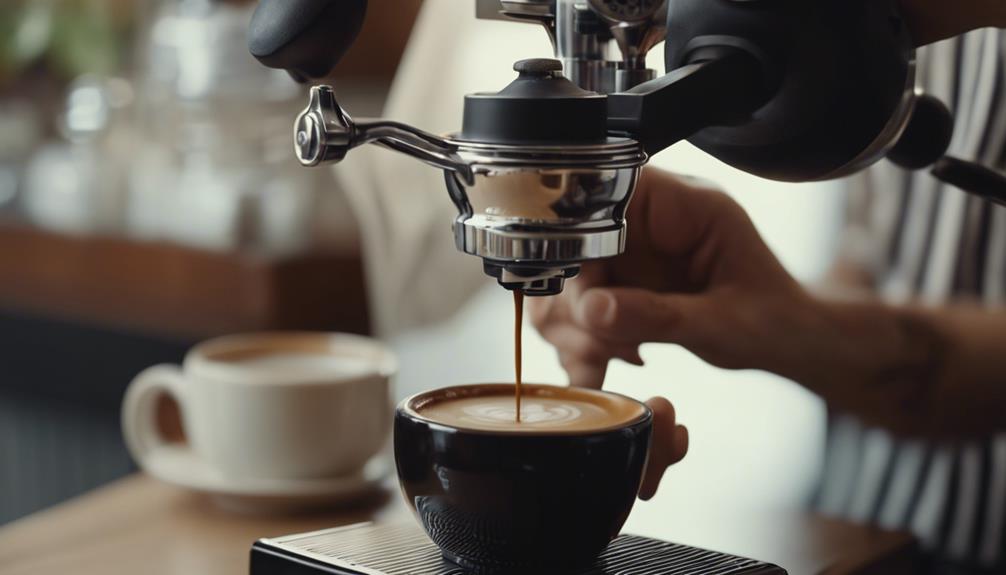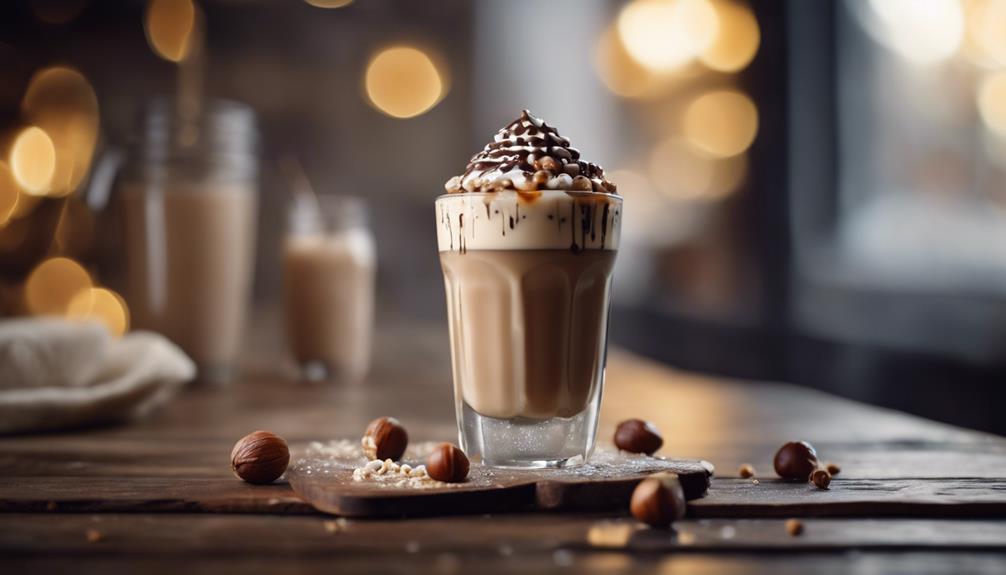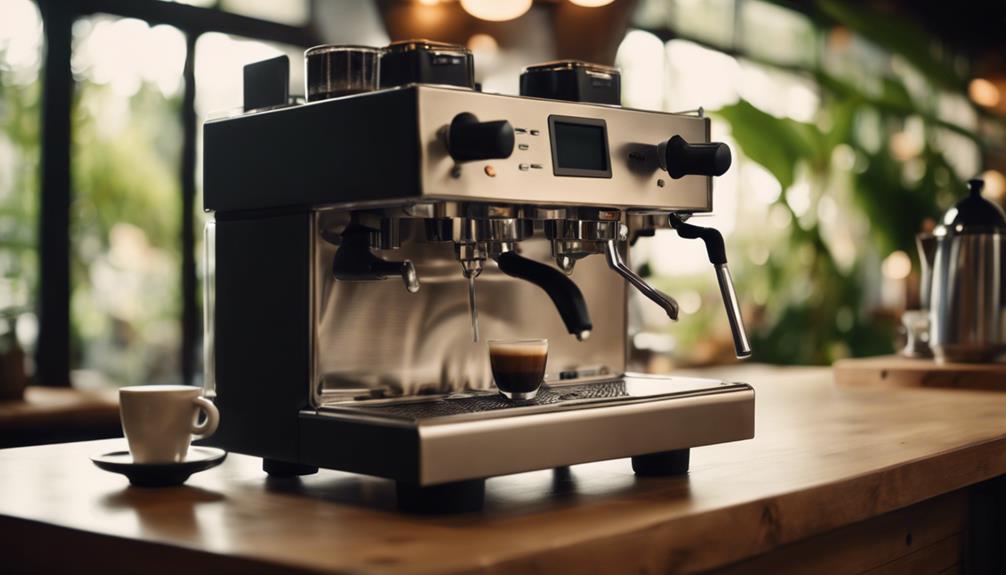Experiencing a bitter taste in your espresso? It could be due to extraction issues. To remedy this, consider adjusting factors such as grind size, tamping pressure, water temperature, and perfecting your tamping techniques. Over-extraction, which occurs when water bonds too much with the coffee grounds, can result in bitterness. Aim to tamp with around 30 pounds of pressure for a consistently even extraction. Using scalding hot water can also contribute to a bitter taste. Try grinding coarser to control the extraction rate and lessen bitterness. The ideal water temperature is between 195-205°F (90-96°C). Remember, making precise adjustments is crucial for achieving a well-balanced shot. Seeking additional insights can further enhance the quality of your espresso.
Key Takeaways
- Bitter espresso results from over-extraction, often caused by fine grinds and high water temperature.
- Adjust grind size to coarser settings to control extraction and reduce bitterness.
- Ensure water temperature between 195-205°F to prevent scorching the coffee and bitterness.
- Proper tamping at 30lbs pressure promotes even extraction and balanced flavor in espresso.
- Experiment with tamping pressure, grind size, and water temperature for the perfect espresso shot.
Understanding Bitter Espresso
To understand the essence of bitter espresso, explore the intricacies of over-extraction and its key contributors. Bitter espresso occurs when too much flavor is extracted from the coffee grounds, often caused by factors such as using a grind size that's too fine or tamping the coffee too tightly.
Additionally, bitter espresso can result from water temperature being too hot, scorching the coffee during brewing. To fix bitter espresso, it's important to adjust grinder settings to coarser grounds, aim for a shot time of 20-30 seconds, and guarantee proper tamping pressure.
Different beans may require specific grinder settings to achieve the best balance and flavor profile. Understanding the impact of over-extraction on the taste of your espresso is essential in mastering the art of brewing a perfect cup.
Impact of Over-Extraction
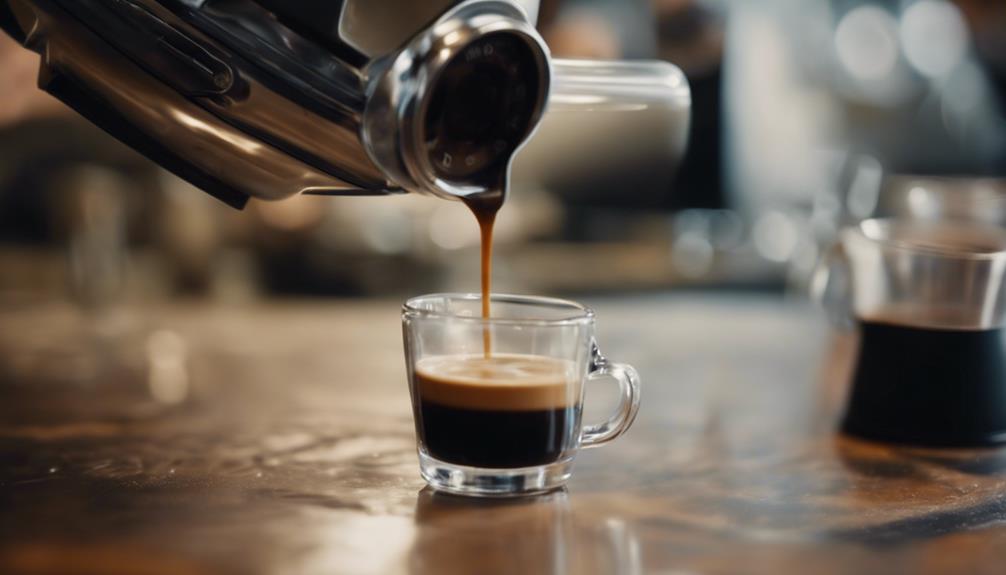
Over-extraction in espresso brewing leads to a bitter taste due to excessive bonding between water and coffee, often resulting from factors such as fine grinds and tight tamping. When the water interacts with the coffee grounds for too long or too intensely, it extracts compounds that can make the shot taste bitter. This can be exacerbated by using water that's too hot or scorching the coffee during the brewing process.
To avoid over-extraction and bitterness in your espresso, it's essential to ensure that your tamping pressure is around 30lbs, as this helps regulate the flow of water through the coffee puck.
Burnt coffee flavors can also arise from overheating or prolonged exposure to heat during extraction. To fix bitter shots caused by over-extraction, consider adjusting your grinder settings to produce coarser grounds. This adjustment can help prevent excessive extraction, leading to a more balanced and flavorful espresso shot.
Adjusting Grind Size
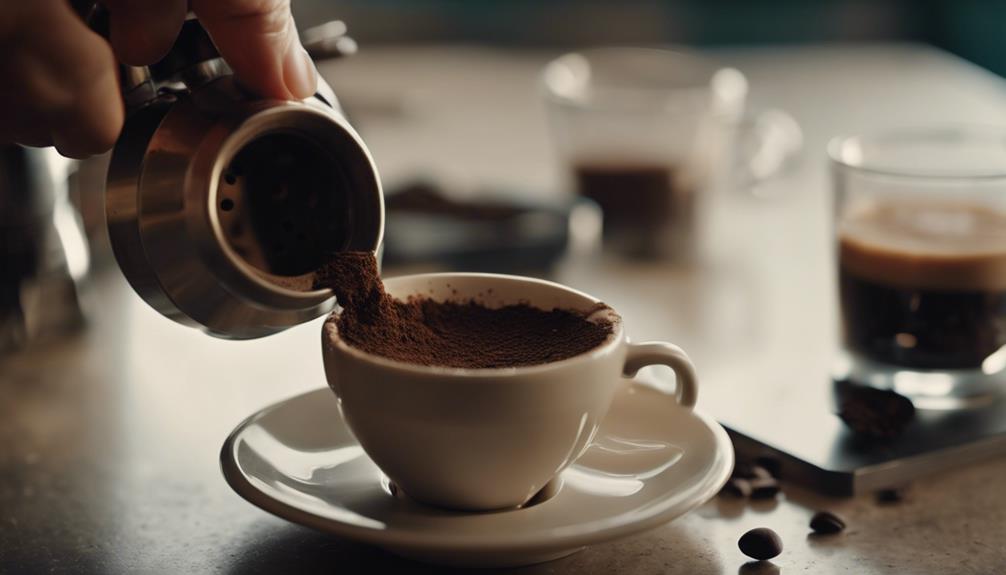
Adjusting the grind size plays a significant role in controlling the extraction process and ultimately influencing the taste of your espresso shots. To help you achieve the perfect balance and avoid bitter coffee, consider adjusting your grind coarser. This adjustment can prevent over-extraction, reducing the bitter taste in your espresso.
| Espresso Taste | Adjust Your Grind | Taste Bitter |
|---|---|---|
| Under-Extracted Coffee | Grind Coarser | Brew Time |
| Bitter Coffee | Grind Coarser | Adjust Your Grind |
Experimenting with different grind sizes is essential to finding the right balance of flavors in your espresso. If your espresso tastes bitter, try grinding coarser to slow down the extraction process and reduce bitterness. Remember, the grind size directly impacts the extraction rate, so finding the best size is key to enjoying a well-balanced espresso shot.
Controlling Water Temperature
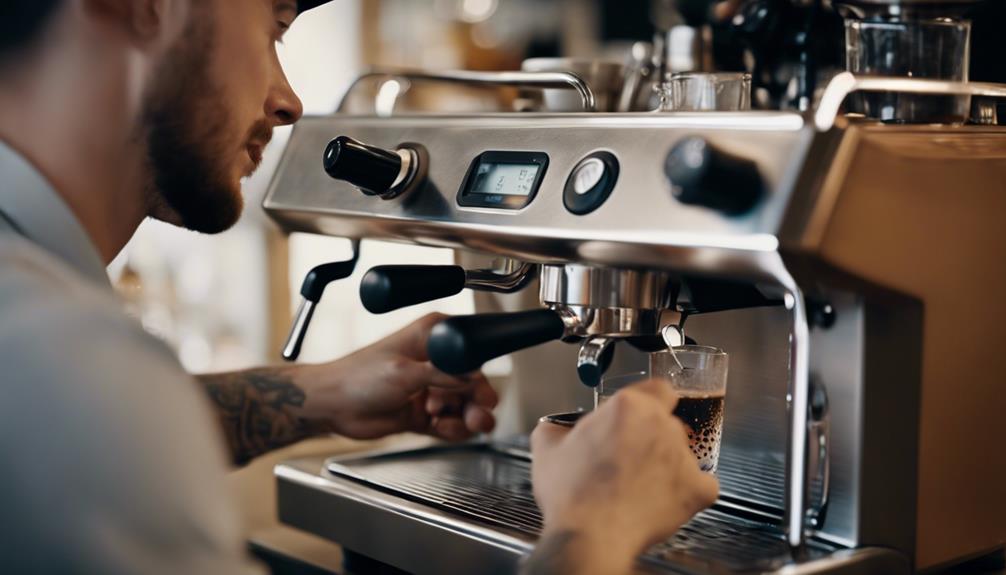
Managing the water temperature is vital in ensuring your espresso doesn't turn out bitter due to improper brewing conditions. Water temperature plays a significant role in the taste of your espresso shots, with bitterness often arising from using water that's too hot.
To avoid bitterness, aim for a proper water temperature range of about 195-205°F (90-96°C) during the espresso extraction process. Inconsistent water temperature can result in variations in taste, potentially leading to bitter espresso shots.
Hence, monitoring and controlling the water temperature is essential for achieving a balanced and non-bitter espresso flavor profile. By adjusting the water temperature based on factors like the type of coffee beans and their roast level, you can effectively control the bitterness in your espresso shots.
Perfecting Tamping Techniques
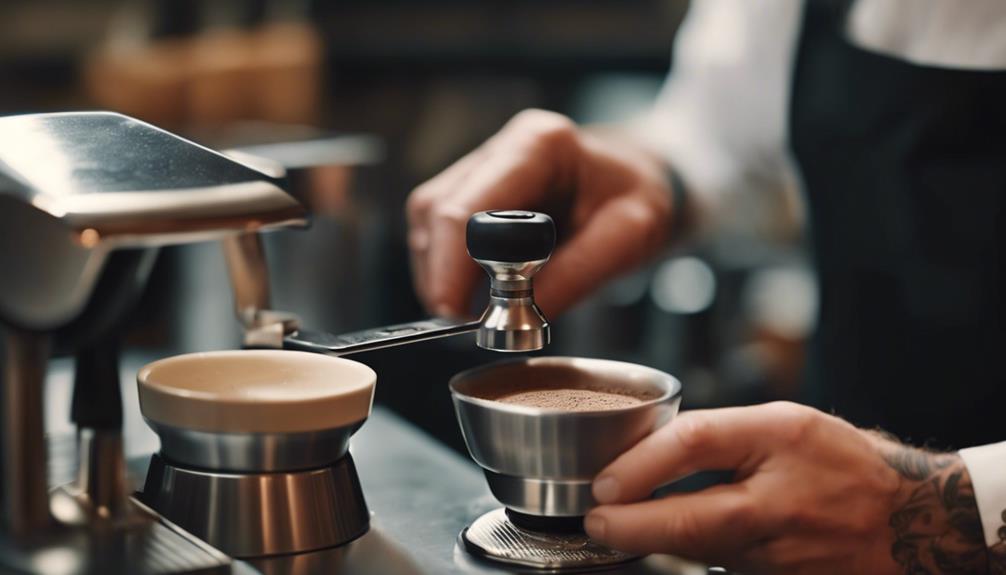
To guarantee your espresso shots are balanced and flavorful, mastering proper tamping techniques is vital. Tamping is the process of applying consistent pressure to the coffee grounds in the portafilter to make certain of even extraction.
By using around 30 pounds of pressure consistently, you can create a level and compacted coffee bed, which is essential for a well-extracted espresso shot. Inconsistent tamping pressure can lead to channeling, where water finds paths of least resistance, resulting in uneven extraction and a bitter taste in your espresso.
On the other hand, tamping too lightly can cause water to flow through gaps in the coffee puck, leading to under-extraction and a lack of flavor in your shot. By mastering tamping techniques and achieving a uniform and firm tamp, you can improve the quality of your espresso, ensuring a flavorful and balanced cup every time.
Frequently Asked Questions
How to Get Rid of Bitter Taste in Coffee?
To get rid of a bitter taste in coffee, there are several adjustments you can make to improve the flavor. First, consider tweaking brewing factors such as water temperature, grind size, and tamping pressure. Aim for a 20-30 second shot time to achieve a balanced flavor profile. Experimenting with different types of beans and adjusting the grinder settings can also lead to a more enjoyable taste experience.
Regularly cleaning and maintaining your coffee equipment is essential to prevent bitterness from developing. By taking these steps and ensuring that your equipment is in top shape, you can look forward to smoother and more satisfying cups of coffee.
How to Fix a Sour Espresso Shot?
To fix a sour espresso shot, adjust the grind size finer and extend the extraction time.
Make sure the water temperature is adequate for proper extraction.
Consider using higher quality coffee beans for improved flavor.
Experiment with varying tamping pressures to achieve a balanced shot.
Consistent dosing and tamping techniques are essential for fixing sourness in your espresso.
These steps can help you achieve a smoother, more satisfying espresso shot.
How to Fix an Espresso Shot?
To fix an espresso shot, first make sure water temperature and tamping pressure are on point.
Adjust grinder settings for coarser grounds if your shots taste consistently bitter.
Shoot for a 20-30 second extraction time to avoid over-extraction. If your shot takes longer, go coarser; if too fast, grind finer.
Remember, different beans may need different grinder settings for the best flavor.
Keep experimenting to find your perfect brew balance!
How to Make Espresso Taste Better?
To make espresso taste better, start by using high-quality, freshly roasted coffee beans for a richer flavor. Adjust your grind size to control extraction levels and reduce bitterness.
Properly tamp your coffee grounds with around 30lbs of pressure to prevent over-extraction. Keep your equipment clean to avoid off-flavors.
Experiment with different brewing parameters like water temperature and brew ratio to find your perfect balance and enhance the taste of your espresso.
How can I make my espresso less bitter?
To reduce espresso vs coffee bitterness, try adjusting the grind size to make it finer. Use fresh, high-quality beans and ensure your equipment is clean. Consider lowering the brewing temperature and shortening the extraction time. Experiment with different roasts and try adding a small amount of sugar or a flavored syrup to mask the bitterness.
Conclusion
To sum up, bitter espresso is often the result of over-extraction, but can be rectified by adjusting the grind size, controlling water temperature, and perfecting tamping techniques.
By comprehending the factors that contribute to bitterness, you can guarantee a more balanced and enjoyable espresso experience.
Remember, a well-prepared espresso should be bold and rich, not bitter like burnt toast on a Monday morning.
